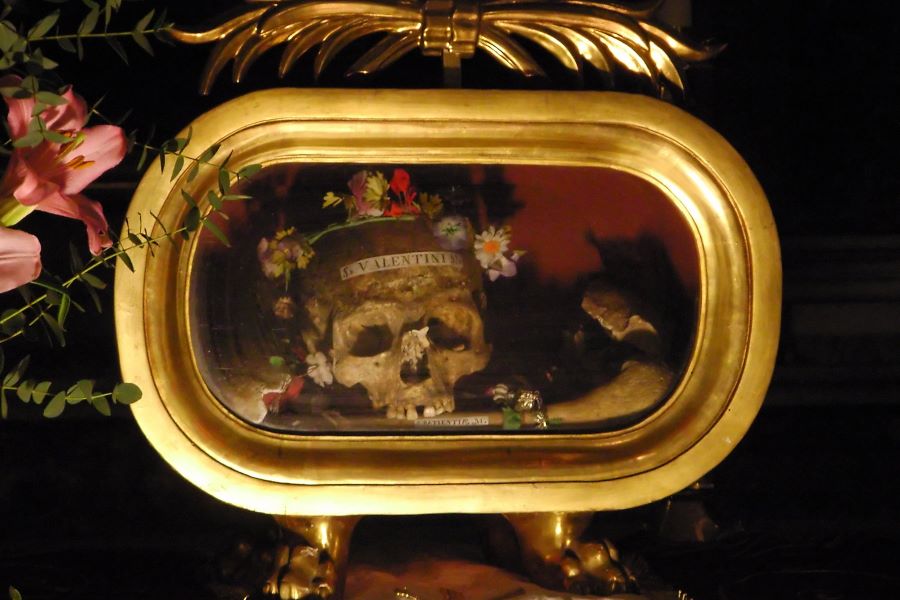Looking for an unusual way to celebrate Valentine’s Day? Maybe you’re tired of the usual chocolates, flowers, and cheesy cards. How about a twist on tradition by visiting the man behind the legend? Or, at least, what remains of the man. Embark on a journey to the relics of St. Valentine, spread across three cities: Prague, Rome, and Glasgow.
St. Valentine is a figure shrouded in the mists of history. He was allegedly a priest in Rome during the 3rd century. Legend has it that Valentine defied Emperor Claudius II’s ban on marriage for young soldiers, believing that love should not be hindered by the whims of war. He secretly performed marriages for young lovers, an act of rebellion that eventually led to his arrest. While imprisoned, Valentine supposedly healed his jailer’s daughter of blindness, a miracle that further cemented his saintly reputation. His execution on February 14 became a symbol of sacrificial love.
So, why not delve into the history and legacy of the patron saint of love and get a fresh perspective on a day often drowned in commercialism. From the mystical allure of Prague to the ancient streets of Rome, and the vibrant heart of Glasgow, such a trip would represent a fascinating exploration of love’s enduring symbolism through the ages.
In Prague, the Church of Sts. Peter and Paul at Vyšehrad holds a captivating secret. Nestled within this historic sanctuary is a fragment of St. Valentine’s shoulder. This relic, a symbol of enduring love and devotion, resides in a city renowned for its mystical allure and gothic architecture. The juxtaposition of the relic’s solemn history against Prague’s charming backdrop offers a thoughtful reflection on the nature of love and sacrifice.

Skull of St. Valentine, Church of Santa Maria, Rome by Mike Coats licensed under CC BY-SA 2.0 DEED
Rome, a city steeped in layers of the past, presents a slightly more direct connection to St. Valentine. The Basilica of Santa Maria in Cosmedin, an unassuming yet historic church, is home to a venerated skull, believed to be that of St. Valentine. Encased in a glass reliquary and adorned with a crown of flowers, this relic serves as a poignant reminder of the saint’s martyrdom. Visitors often find themselves enveloped in a sense of solemnity, pondering the depths of devotion and the price of love in ancient times.
In Glasgow, the Church of Blessed St. John Duns Scotus in the Gorbals district safeguards what is believed to be a small portion of the saint’s arm bone. This relic, set against the backdrop of a vibrant and modern city, bridges the gap between ancient tales of romance and contemporary expressions of love. It’s a stark reminder that the essence of love and devotion transcends time and place, resonating even in the most unexpected locales.

St Valentine’s Relics by Anne licensed under CC BY-NC-ND 2.0 DEED
The pursuit of the relics of St. Valentin offers a captivating and thought-provoking alternative to traditional Valentine’s Day celebrations. It weaves a narrative that connects the ancient with the modern, the sacred with the secular, and the mystical with the historical. For those seeking a deeper understanding of the roots of Valentine’s Day, and perhaps a more reflective celebration of love, this pilgrimage to the relics of St. Valentine presents a path less traveled, filled with history, mystery, and a touch of the macabre.
Have you ever visited any of these St. Valentine relics? Tell us about it in the comments below!


Leave a Reply